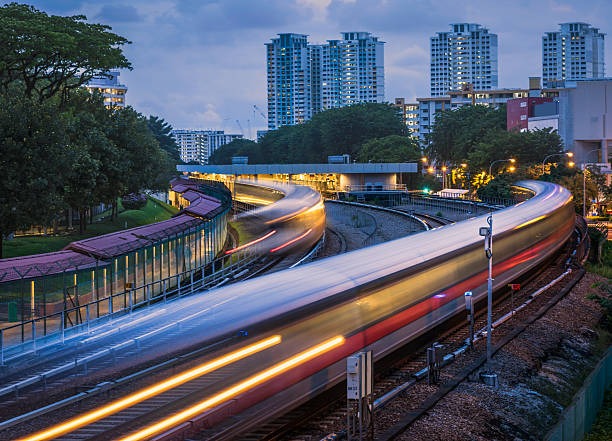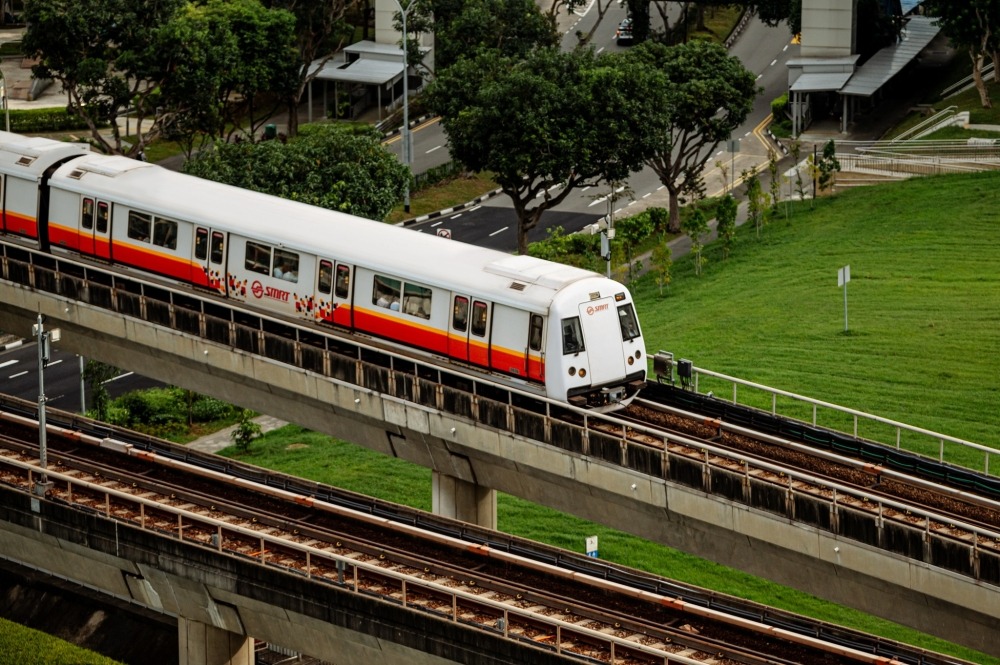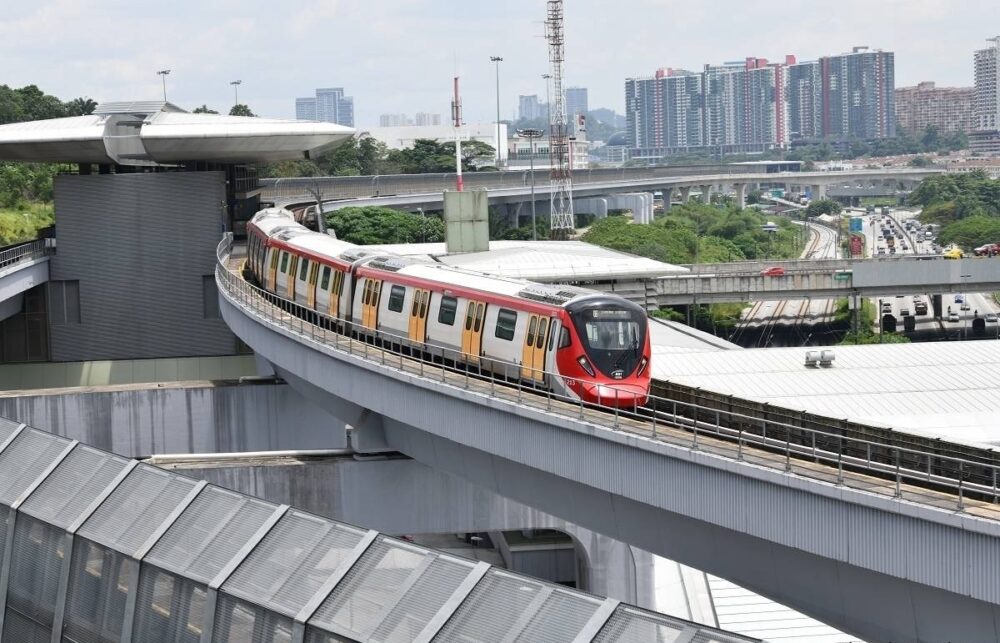In Singapore, one truth holds steady across all market cycles: proximity to MRT stations consistently drives higher property values.
Buyers and tenants are willing to pay premiums, sometimes 10% to 20% more, for homes within walking distance of train lines.
The reason is simple: MRT access translates directly into convenience, time savings, and long-term demand stability. For investors and homeowners alike, connectivity has become one of the most reliable indicators of property resilience and appreciation.
Why MRT Connectivity Matters

Source: businesstoday.com.my
Singapore’s entire urban framework revolves around the MRT network. Unlike in many cities, where car ownership is the default, Singapore’s policies actively limit private vehicle ownership through taxes and quotas. That makes the MRT system the backbone of everyday commuting.
When a new MRT line opens, surrounding neighborhoods see an immediate uplift in livability and accessibility.
The average Singaporean spends more than 80 minutes commuting daily, according to the Land Transport Authority (LTA).
Living within a 10-minute walk of an MRT station can save up to 40 minutes per day, translating into tangible quality-of-life benefits that buyers willingly pay for.
Accessibility doesn’t just reduce travel time; it expands economic opportunity. Tenants near MRT nodes can reach business districts, universities, and shopping hubs faster, making such properties attractive to a diverse tenant base: professionals, families, and expatriates alike.
Price Effects of MRT Proximity
Multiple studies by NUS and the Urban Redevelopment Authority (URA) confirm that homes within 400 meters of MRT stations consistently outperform the broader market. The “MRT premium” tends to be strongest when:
- The line connects directly to the CBD or major employment zones.
- The surrounding area offers integrated retail or mixed-use developments.
- The new line is part of an underserved corridor previously lacking public transit.
For instance, properties near the Downtown Line saw price appreciation of up to 15% within three years of its completion. Similarly, resale prices along the Thomson-East Coast Line began trending upward years before its operational phases opened.
The impact is even more visible for condominiums developed in tandem with MRT expansion projects. Developers frequently plan new launches near upcoming stations to capture early demand, and investors often enter during pre-launch phases, anticipating appreciation after completion.
Urban Planning and the 2040 Vision
Singapore’s Land Transport Master Plan 2040 envisions 8 in 10 households living within a 10-minute walk of an MRT station. This expansion aligns with the “car-lite” city strategy, promoting sustainability and efficient land use.
As new lines, like the Cross Island Line and Jurong Region Line, progress through construction, areas such as Pasir Ris, Clementi, and Jurong West are already witnessing land value adjustments. Infrastructure precedes real estate change, and developers are quick to position projects in these zones.
For instance, new residential developments such as Pinery Residences illustrate how future MRT connectivity anchors long-term value.
Located in a rapidly evolving neighborhood slated for improved transit integration, the project benefits from early-stage anticipation effects; buyers purchase not just a home but a stake in the infrastructure-led growth of the region.
The presence of upcoming stations typically attracts cafes, supermarkets, and lifestyle amenities within a short time frame, transforming once-quiet districts into vibrant, self-sustaining communities.
How Rental Yields Respond to Connectivity

Source: istockphoto.com
Rental demand closely mirrors transport convenience. Expats, short-term professionals, and students generally select homes based on their proximity to MRT lines rather than car accessibility. Units near major interchange stations, like Bishan, Buona Vista, or Serangoon, enjoy faster occupancy turnover and reduced vacancy periods.
For investors, this translates into yield stability even during softer market periods. Properties within one kilometer of MRT stations maintain a higher tenant retention rate, as renters avoid long commutes and costly rideshares.
In the resale market, landlords can command modest rent increases when new lines enhance existing accessibility. This is particularly evident in areas like Lentor or Tampines, where the addition of new lines has widened commuter options without oversaturating the market.
Infrastructure Ripple Effects Beyond Property
MRT lines do more than raise home prices; they reshape economic geography. When a new station appears, retail nodes follow. Supermarkets, healthcare clinics, and co-working spaces cluster around transit exits, generating additional foot traffic and employment.
This “transit-oriented development” (TOD) approach aligns with Singapore’s compact urban model, reducing congestion while raising the overall value of land. The government’s planning precision ensures that transport investments deliver not only mobility but also sustained economic uplift.
A practical example can be seen around the upcoming stations serving the Thomson-East Coast Line, where integrated developments combine residences, malls, and green spaces. Properties such as Narra Residences are positioned within these strategic urban clusters, illustrating how infrastructure-led design elevates daily living convenience while reinforcing long-term capital appreciation potential.
Case Study: The North-East Line Effect
When the North-East Line launched in 2003, neighborhoods like Buangkok and Sengkang were still emerging. In the decade following the line’s opening, resale HDB prices in Sengkang rose by roughly 40%, outpacing national averages. The effect wasn’t temporary; even after the initial surge, property values stabilized at higher baselines.
The pattern repeated with subsequent expansions, the Circle Line uplifted properties in Dakota and Bartley; the Downtown Line transformed Bukit Panjang from a peripheral town into a well-connected residential hub.
Today, analysts expect similar trends around the Jurong Region Line and Cross Island Line. Buyers who recognize these patterns early, especially those securing units in integrated projects near planned stations, often see stronger medium-term returns.
The Middle Market Advantage

While luxury properties near Orchard and Marina Bay command record prices, mid-tier developments close to MRT stations have become the backbone of Singapore’s property ecosystem. These units cater to both local families and younger professionals priced out of the central core.
Their appeal lies in functional convenience: access to trains, schools, and amenities within one cohesive zone. This is where MRT connectivity becomes more than a selling point; it becomes a foundation of urban life.
Projects in mature estates, like Upper Thomson or Holland Village, demonstrate this balance: not overdeveloped yet rich in transport access. Their consistent performance underscores how MRT proximity creates intrinsic value that transcends short-term speculation.
Measuring the Premium
To quantify the MRT premium, URA transaction data shows:
| Distance to MRT | Average Price PSF (2024) | Premium vs. City Avg |
| < 400 m | SGD 2,150 | +15–20% |
| 400–800 m | SGD 1,950 | +5–10% |
| > 800 m | SGD 1,720 | Baseline |
Even small changes in accessibility yield substantial differences in capital values and rental yields. Investors often accept slightly smaller unit sizes in exchange for proximity, indicating that convenience, not space, dictates market behavior.
Long-Term Implications

Source: malaysia.news.yahoo.com
As Singapore edges toward a fully integrated transport network, MRT connectivity will remain a decisive factor in real estate valuation. Unlike speculative trends tied to lifestyle branding or short-term foreign buyer policies, infrastructure impact is measurable, enduring, and policy-supported.
For developers, MRT access dictates design philosophy,mixed-use podiums, pedestrian-friendly walkways, and retail integration all stem from transit-oriented principles. For homeowners, it defines daily comfort and future liquidity.
In the next decade, as new lines are completed and travel times shorten further, the gap between MRT-linked and non-linked properties is expected to widen. Buyers prioritizing transit access today are effectively future-proofing their assets against shifting urban dynamics.
Conclusion
Singapore’s property market runs on the rhythm of its MRT map. Each new line redrafts the city’s real estate hierarchy, redistributing value from central zones toward emerging connected districts. Properties near stations benefit first and retain their edge longest.












